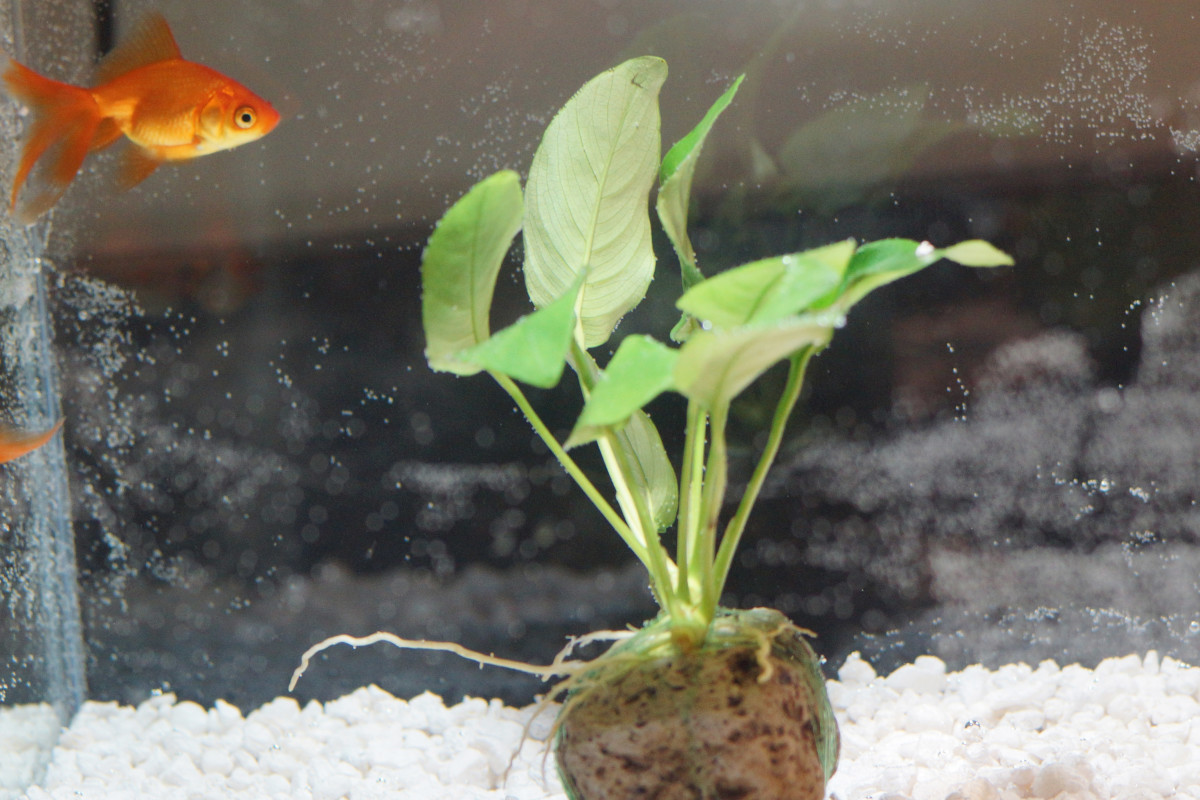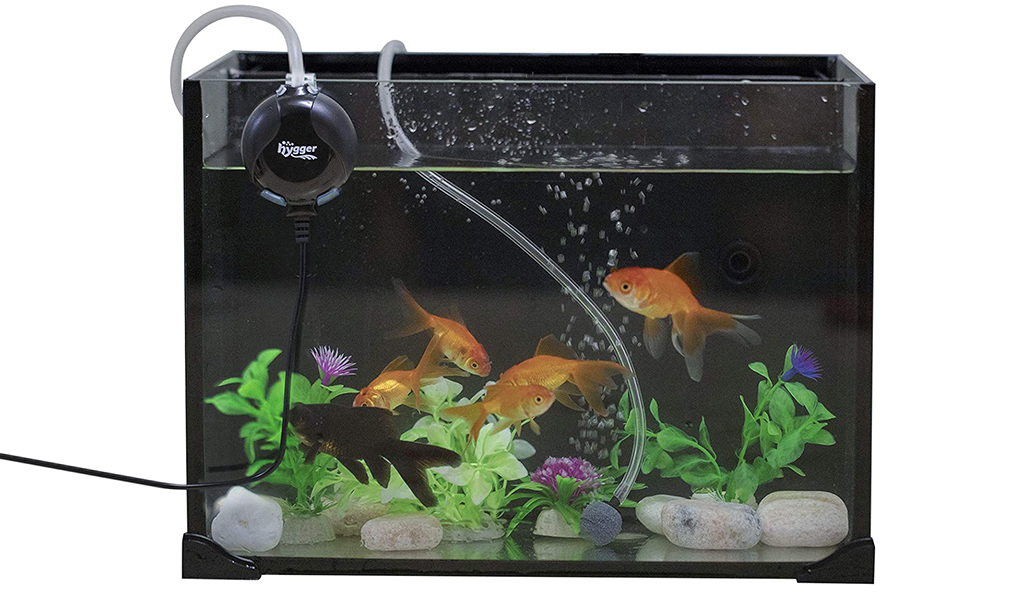
Having a fish as a pet can be a delightful addition to any home or office. However, not everyone has the time or resources to maintain a traditional aquarium with a continuous supply of oxygen. Luckily, there are several species of fish that can thrive in an oxygen-free bowl, making them perfect for people with busy lifestyles or limited space.
One such species is the betta fish, also known as Siamese fighting fish. Betta fish are native to the shallow waters of Thailand, where they have developed a unique adaptation that allows them to breathe air directly from the surface. This means that they can survive in bowls with low oxygen levels, as long as they have access to fresh air. Betta fish are beautiful and come in a variety of colors, making them a popular choice among fish hobbyists.
Another option for an oxygen-free bowl is the African dwarf frog. Despite their name, African dwarf frogs are not actually fish, but they are often kept in fish tanks due to their small size and ease of care. These aquatic frogs have lungs and can breathe air, allowing them to survive in bowls without oxygen pumps. African dwarf frogs are peaceful and active, and they make fascinating pets to observe.
One more fish species that can thrive in an oxygen-free bowl is the paradise fish. Native to Southeast Asia, paradise fish have a labyrinth organ that enables them to breathe air. This allows them to live in oxygen-deprived environments and makes them a suitable choice for bowls without filtration systems. Paradise fish are known for their vibrant colors and can be territorial, so it’s important to keep them alone or in a carefully selected community tank.
When considering a fish for an oxygen-free bowl, it’s crucial to provide them with a suitable habitat. This includes regular water changes, a balanced diet, and a comfortable amount of space to swim. It’s also important to check the water quality frequently to ensure the well-being of the fish. With proper care and attention, these oxygen-tolerant fish can thrive in a bowl and bring joy to any environment.
Adaptations of fish for oxygen-free conditions
Fish have evolved various adaptations that allow them to survive in oxygen-free conditions, such as stagnant or oxygen-depleted water bodies. These adaptations play a crucial role in the ability of certain fish species to thrive in environments with limited oxygen availability. Here are some of the key adaptations:
- Air-breathing organs: Some fish species, such as labyrinth fish, have secondary structures called labyrinth organs that allow them to extract oxygen directly from atmospheric air. These organs are highly vascularized and located in the gills, enabling the fish to take in oxygen from the air when water oxygen levels are low.
- Anaerobic respiration: Certain fish have the ability to perform anaerobic respiration, which allows them to survive when oxygen levels are critically low. Anaerobic respiration is a metabolic process that doesn’t require oxygen and enables the fish to extract energy from food sources without the need for oxygen.
- Tolerance to low oxygen levels: Some fish species have a high tolerance to low oxygen levels, allowing them to survive in environments where other fish would struggle. These species often have physiological adaptations that enable them to efficiently utilize the limited oxygen available, such as increased hemoglobin concentration or improved oxygen-carrying capacity.
- Burrowing behavior: Certain fish, such as mudskippers, have adapted to live in oxygen-poor environments by burrowing in mud or sand. By creating burrows, these fish can create a more oxygen-rich microenvironment for themselves, reducing their reliance on oxygen available in the surrounding water.
- Hibernation and estivation: Some fish species have the ability to enter periods of hibernation or estivation when oxygen levels drop significantly. During these dormant periods, the fish slow down their metabolism and reduce their oxygen requirements, allowing them to survive in oxygen-free conditions for extended periods.
These adaptations highlight the incredible diversity and resilience of fish species, allowing them to occupy various ecological niches, even in extreme environments with limited oxygen availability.
Oxygen-free fish species
When considering a fish that can thrive in an oxygen-free bowl, it is important to choose a species that is adapted to low-oxygen environments. While most fish require a well-oxygenated aquarium with proper filtration and aeration, there are some species that have the ability to survive in oxygen-deprived conditions. These fish have evolved unique adaptations that allow them to extract oxygen from the water or the air in their environment.
One such species is the Anabantidae family, commonly known as labyrinth fish. They are named for their labyrinth organ, a specialized structure located in their gills that allows them to breathe atmospheric air. This adaptation enables them to survive in oxygen-deprived environments, such as stagnant water or temporary puddles. Labyrinth fish include popular aquarium species like bettas and gouramis.
Another group of fish that can survive in low-oxygen conditions is the Cyprinidae family, or the carp family. Carp have the ability to extract oxygen from the water through their gills, but they also possess a unique adaptation called a labyrinth organ. This organ allows them to source oxygen from the air, just like labyrinth fish. Some common carp species, such as koi and goldfish, are well-suited to oxygen-depleted environments.
The Electric knifefish, or the Gymnotidae family, is an interesting species that can thrive in oxygen-free bowls. These fish have the ability to generate weak electric fields through special cells located on their bodies. This unique adaptation not only helps them navigate in the dark or murky waters but also assists in respiration by extracting oxygen from the water, even in oxygen-depleted conditions.
Lastly, the African lungfish, or the Protopteridae family, is a remarkable species that is adapted to survive in oxygen-free environments. African lungfish possess a lung-like organ that enables them to gulp air from the surface. They can survive for extended periods out of water as long as their skin remains moist. These fish have the ability to aestivate, a state of suspended animation, during periods of drought or when water levels recede.
It is important to note that while these fish species are able to survive in oxygen-free conditions, they still require proper care and maintenance. Adequate water quality, temperature, and suitable nutrition should be provided to ensure their well-being and longevity in an oxygen-free bowl.
Low-oxygen tolerant fish species
When it comes to keeping fish in an oxygen-free bowl, it is important to choose species that are able to tolerate low levels of oxygen in the water. While most fish cannot survive in a completely oxygen-free environment, there are some species that can thrive in conditions with less oxygen. Here are a few low-oxygen tolerant fish species to consider:
1. Lungfish
Lungfish are ancient fish that possess a unique adaptation for surviving in low-oxygen environments. They have a specialized lung-like organ that allows them to breathe air. This makes them well-suited for oxygen-depleted water conditions. Lungfish are hardy and can survive for extended periods without access to high levels of oxygen. They are an interesting choice for a low-oxygen fish bowl.
2. Gouramis
Gouramis are a popular tropical fish species that can tolerate low-oxygen conditions. They have a labyrinth organ, which allows them to breathe atmospheric air. This adaptation helps them survive in stagnant waters with low oxygen content. Gouramis are available in a variety of colors and patterns, making them an attractive choice for an oxygen-free fish bowl.
It is important to note that even these low-oxygen tolerant fish species still require some level of oxygen in the water to survive. Regular water changes and providing proper filtration and aeration can help maintain suitable oxygen levels in an oxygen-free fish bowl.
Before introducing any fish into an oxygen-free bowl, it is essential to research and understand the specific needs of the chosen species. Proper care, water quality maintenance, and appropriate feeding should always be considered to ensure the health and well-being of the fish.
Non-oxygen reliant metabolic systems
Fish are known to be highly adaptable creatures, capable of surviving in various environments. In some extreme cases, there are species of fish that have evolved to survive with non-oxygen reliant metabolic systems.
These fish have unique adaptations that allow them to thrive in environments with limited oxygen availability. They have evolved different ways to obtain energy and carry out metabolic processes without relying on the usual oxygen-dependent pathways.
1. Anaerobic respiration

One such adaptation is the ability to perform anaerobic respiration. Anaerobic respiration is a metabolic process that does not require oxygen. Instead, these fish can utilize different types of molecules, such as glucose or lactic acid, to generate energy. This allows them to survive in oxygen-depleted or low-oxygen environments, such as stagnant ponds or muddy rivers.
2. Gills modification
Another adaptation seen in fish with non-oxygen reliant metabolic systems is the modification of their gills. These fish have evolved specialized gill structures that enable them to extract oxygen from sources other than the water. For example, some species have developed gills that can directly extract oxygen from the air, allowing them to survive in environments with little dissolved oxygen in the water. This adaptation is particularly useful for fish inhabiting shallow pools or temporary habitats.
The evolution of non-oxygen reliant metabolic systems in fish highlights their remarkable ability to adapt to diverse and challenging environments. However, it is important to note that these adaptations are specialized and not present in all fish species. Therefore, careful consideration and research should be conducted when selecting fish for oxygen-free bowls, ensuring their specific needs are met for long-term welfare.
| Advantages | Disadvantages |
|---|---|
| – Ability to survive in oxygen-depleted environments | – Limited availability and diversity of fish species |
| – Adaptation to unique ecological niches | – Specialized care requirements |
| – Potential for exploring new research opportunities | – Reduced energy efficiency compared to oxygen-dependent metabolism |
Question and answer:
Can fish survive in an oxygen-free bowl?
Yes, there are certain types of fish that have adapted to survive in low-oxygen environments, such as Betta fish or Siamese fighting fish.
What are some types of fish that can live in oxygen-free bowls?
Some examples of fish that can thrive in an oxygen-free bowl are Betta fish, African dwarf frogs, and guppies. These species have the ability to breathe atmospheric oxygen through a specialized labyrinth organ.
Are there any specific requirements for maintaining an oxygen-free bowl for fish?
Yes, if you want to keep fish in an oxygen-free bowl, you need to ensure that the water is properly filtered and cycled to maintain water quality. Additionally, you should provide the fish with a proper diet and regularly monitor the temperature of the water.
How often should the water in an oxygen-free bowl be changed?
The frequency of water changes in an oxygen-free bowl depends on the number and size of fish, as well as the filtration system used. In general, it is recommended to perform partial water changes every week to prevent the buildup of harmful substances.
Can any other animals live in an oxygen-free bowl besides fish?
Yes, aside from fish, some other animals that can live in an oxygen-free bowl include African dwarf frogs and certain types of snails. These animals have adaptations that allow them to survive in low-oxygen environments.
What are some fish that can survive in an oxygen-free bowl?
Some fish that can survive in an oxygen-free bowl are betta fish, goldfish, and guppies. These fish have the ability to breathe atmospheric oxygen when there is not enough dissolved oxygen in the water.